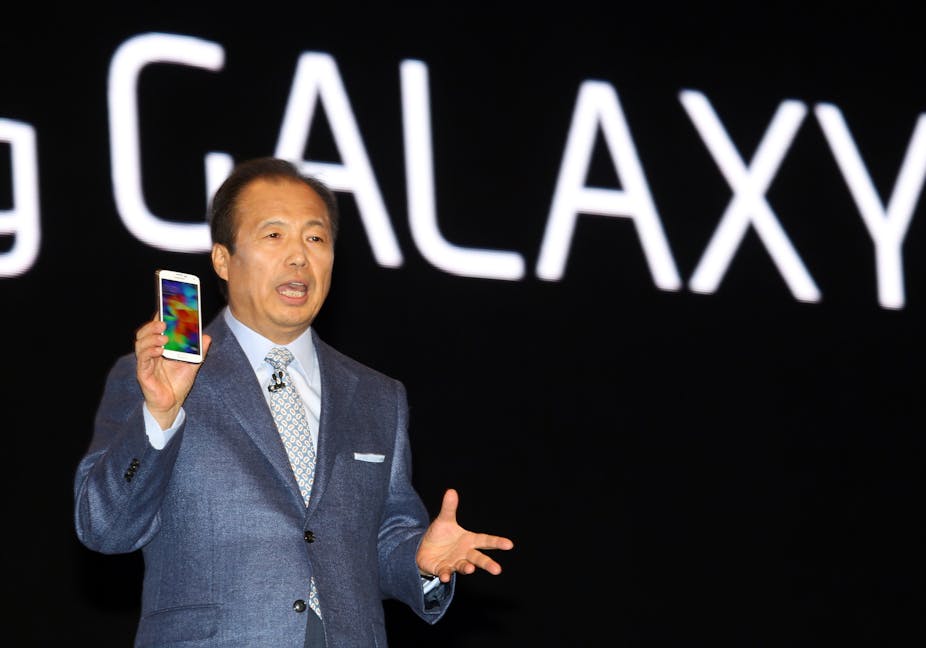The Mobile World congress in Barcelona is the largest mobile phone exhibition in the technology calendar and is the place to see the new mobile technologies that will be attempting to claim your money and a place in your pocket over the next year.
The message coming out of this year’s event though is that while there are lots of new phones coming, we shouldn’t expect a great technological leap from any of them. Most of the phones are incremental updates, running the latest version of Android’s mobile phone operating system KitKat.
Exhibitors were much more interested in displaying their wearable technology innovations this year. There were a few nice designs and some clangers to avoid.
Samsung continues to plug away at the smartwatch market with an updated version of its rather clunky Galaxy Gear. The new watch is lighter and has extra features like TV control. More interesting is their new Gear Fit, which is attempting to converge the smartwatch and fitness band.

Sony has followed with its SmartBand, which will be on the market in March for £80. It looks more like a wristband than a watch and offers standard step and activity recording, along with the ability to take “life snapshots” using a combination of photos, GPS and Facebook services using a connected phone app. So if you’re out with friends at a party having a good time, you tap the “life bookmark” button on your wristband and everything to do with that moment is remembered “forever”. That includes where you were, who you were with and even what music you were listening to at the time.
The Sony device looks rather elegant compared to the Galaxy Gear, although some commentators have described the all-encompassing life logging feature as creepy.
Playing it safe
It’s a good job there is so much happening in wearable tech because mobile makers are playing it safe when it comes to phones.
Samsung has a fifth iteration of its successful Galaxy phone, with small improvement in the internals and a slightly bulkier similar design to the last. The S5 has the same screen as the S4 but a better camera and a slightly better processor. Following in the footsteps of Apple, Samsung has added a fingerprint scanner to its latest phone and has gone a bit further by making the device waterproof to up to 3 metres, making it safe for bathtime.
Samsung has also gone big on health by adding a heart rate monitor to the S5. Having sought to woo fitness fans with its smartwatches and other wearable tech, it now appears to be attempting to link the whole range of products together under the fitness banner. This may be aimed at boosting sales of the smartwatches, which haven’t been going too well so far.
HTC has also taken inspiration from Apple with its latest phone. It has promised a follow up to its widely regarded HTC One in about a month but has filled the gap with a mid-range device. The strategy is not dissimilar to Apple’s latest iPhone release and neither is the phone itself, which comes with a distinctly familiar plastic casing.

Nokia is innovating, but with price rather than technology. While competitors seek to produce ever shinier devices for ever richer customers, one of Nokia’s latest models comes in at just €29. This is the Nokia 220, which is being pitched as an affordable device for all.
Nokia has grouped its phones in four price brackets at this year’s congress, starting with the 220 at the low end. Next comes the Asha 230, which is being aimed at emerging economies and comes with an affordable price tag of €45. Then there’s the Nokia X family of phones, which will cost between €89 and €109 and its existing Lumia range – which is fully integrated into the Microsoft ecosystem.
It seems clear that these low cost devices are aimed at emerging markets such as Africa where price points have typically been very low. Whether the features on offer are enough to steer people away from the full Android experience will probably come to marketing spend and the level of cloud infrastructure support.
Striking out boldly
Outside the biggest names, there is some innovation happening in Barcelona this year, with varying degrees of success.

Fujitsu deserves an honourable mention for its attempt to actually bring something new to the table rather than producing a tweaked version of its own, or indeed someone else’s, device. Unfortunately, it may have gone too far with its rather strange looking glove-and-glasses combination. It’s a good job the glove is aimed at tech professionals, who will be able to use it to point at broken bits of machinary and receive information about what to do about the problem on the glasses. It is far too ugly to succeed in the consumer market.
Meanwhile, Russian company Yota has a phone with screens on either side of the device, which is certainly unique. Over in the we’ve-seen-that-before category sit the Lenova S660 and the Sony Xperia M2. Both of these are perfectly fine devices, but will have to offer more if they wish to command a greater market share.
There are one or two interesting devices coming out of this year’s congress but nothing too innovative or different. Apple no longer attends other people’s parties, having realised that it can command more direct attention running its own events. If rumour is to be believed, Apple will release a wearable device in a few months. We might expect something innovative from that, or from Intel’s range of 64 bit processors but both are at least six to eight months off.

